

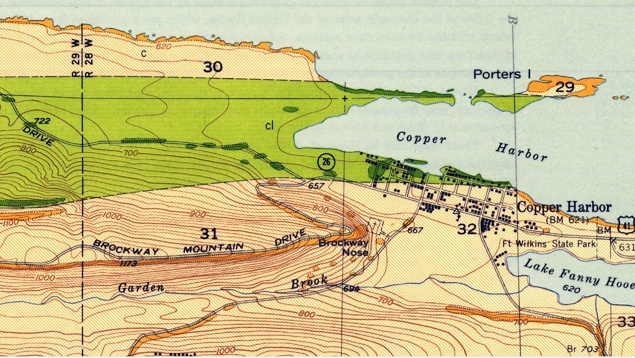
Lake Shore Traps
These rock rings have been known by geologists for over a century--you can read about them in the first visits to Copper Harbor by Foster and Whitney (see p. 61) in 1850.
One general question asked by observers with scientific backgrounds: Are these natural liesegang rings? These are known to be colored cement bands which occur particularly in sedimentary rocks, (some photos). What induces the development of such rings? Can they occur in volcanic rocks?
A new hypothesis: The lavas in the Lake Shore Traps have “stripes” which originate after lichen colonies have lived on the rock surface.
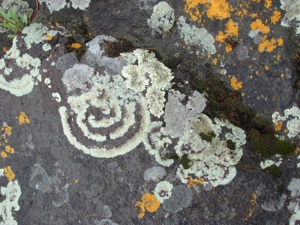
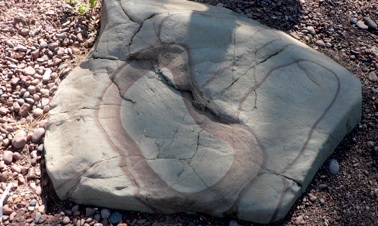
We know that lichens are important agents for the weathering of rocks.
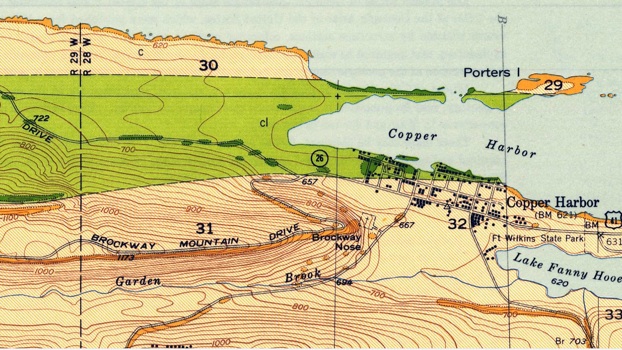
Hunter’s Point offers many geologic opportunites:
-
1.There is a cobble beach, which shows a high energy beach environment and a great place for pebble counting. Just follow the trail north to the beach.
-
2.There is a great contact between the Lake Shore Traps and the conglomerate, which shows how lavas and conglomerates interacted.
-
3.There are very interesting rock rings in the Lake Shore Traps (see discussion below).
-
4.Porters Island ( ~0.5 miles E along shoreline trail) is an outstanding place to see excellent lava and conglomerate outcrops and the same contact. Access is possible when water level is low by wading across, but cold water and dangerous if windy!
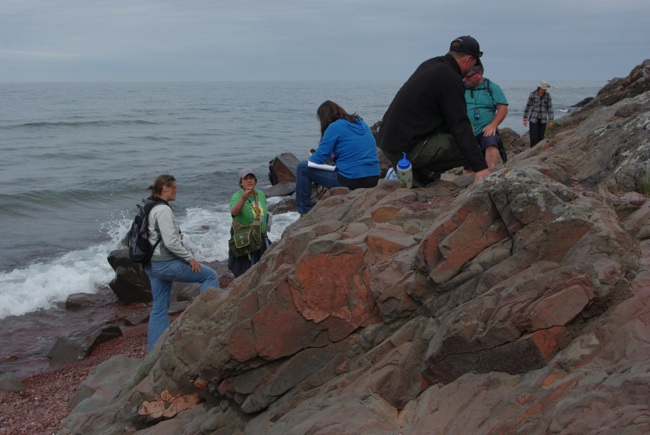

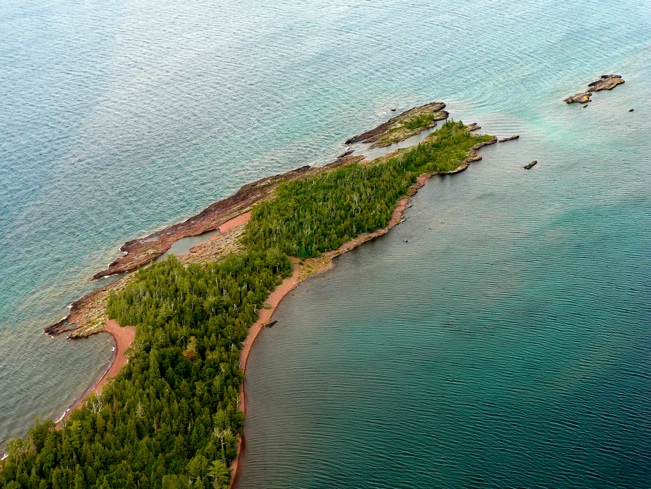
Porter’s Island
Conglomerate

